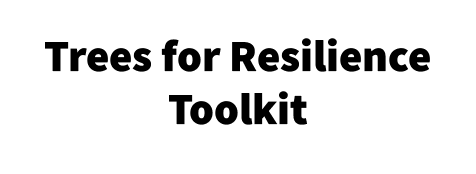ANALYSIS
How the Resource Relates to Community Values/Priorities
Tree canopy assessment or analysis and forest data in the context of other community information helps identify priority areas and initiatives to advance toward a more vibrant community.
Here are some considerations about ANALYSIS
Existing open-source tools (such as the iTree below) are good for general analysis. Be familiar with inputs and parameters of each tool to understand how useful the outputs and data can be for the community conversation.
- Explore ways to customize inputs with high-resolution tree canopy layer (LiDAR, NAIP imagery—see Mapping Toolbox) and specific data for jurisdiction (impervious, census blocks, critical areas, etc.).
- May need to hire a third party to help customize data inputs and analyze outputs for relevant findings.
Resource Links by Topic
Multiple Benefits Analysis
Stormwater
Equity/Human Health
Land Use Planning
- USDA Forest Service iTree Tools – Open-source software suite that provides urban forestry analysis and benefits assessment tools.
- Snoqualmie’s Natural Infrastructure Assessment – Summary report on the city’s quantitative and qualitative analysis of tree canopy and forest’s stormwater mitigation, using different modeling, as well as carbon sequestration (see Appendices A and C).
- Urban Tree Canopy Assessment Toolkit (for Central Puget Sound) – Several analyses of the region, using iTree Landscape (environmental benefits, planting spaces), Tree Equity Score (equity and human health).
- Snohomish County PUD Heat Map (2020-2023 for Snohomish County and Camano Island) – In addition to the heat map, this map includes layers that indicate tree canopy, income levels, social vulnerability, and impervious land cover.
- Puget Sound Urban Tree Canopy and Stormwater Management Technical Report – A multi-community, multi-scale study of two hydrology models (iTree Hydro and WWHM) to compare quantification of urban tree canopy in mitigating stormwater and runoff-related issues.
- Puget Sound Stormwater Heat Map an interactive mapping tool and report generator that quantitatively visualizes hotspots of pollution generation and runoff throughout the Puget Sound watershed.
- StormSensor SURFR (Stormwater Urban Flood Risk Index) – Interactive tool that designates flood risk management zones of a community to help prioritize needed action including preservation of natural forested areas and installation of green infrastructure.
- Building Cities in the Rain – WA Department of Commerce guidebook presents recommended data and a process for prioritizing watersheds for stormwater retrofit investments.
- Tacoma’s Community Tree Map – An analysis tool to explore the intersection of trees, equity, and human health utilizing the city’s Equity/Opportunity Index with tree canopy and greenspace data to identify planting and preservation priorities and opportunities.
- Tree Equity Score – The score combines measures of tree canopy cover need and priority for trees in urban neighborhoods and is derived from tree canopy cover, climate, demographic, and socioeconomic data. Data available for central Puget Sound cities.
- Vibrant Cities Lab Community Action Guide – This guide is designed to support community-based action to advance Tree Equity, outlining a process to help define community values and develop goals that will integrate Tree Equity into social, environmental and economic initiatives.
- Decision Support Tool for Critical Areas and Land Use Planning – A final prospectus on tool development for challenges local governments have with planning for growth and development while also protecting critical areas, due to limited land resources, development pressures, and complex planning processes.
- Trees at Work 2024 (U.S. Forest Service, PlanIT Geo, Arbor Day Foundation) – Collection of canopy analysis data and storymaps highlighting the impacts of urban forestry initiatives.
Photo credit: City of Snoqualmie – Urban Tree Canopy change map
